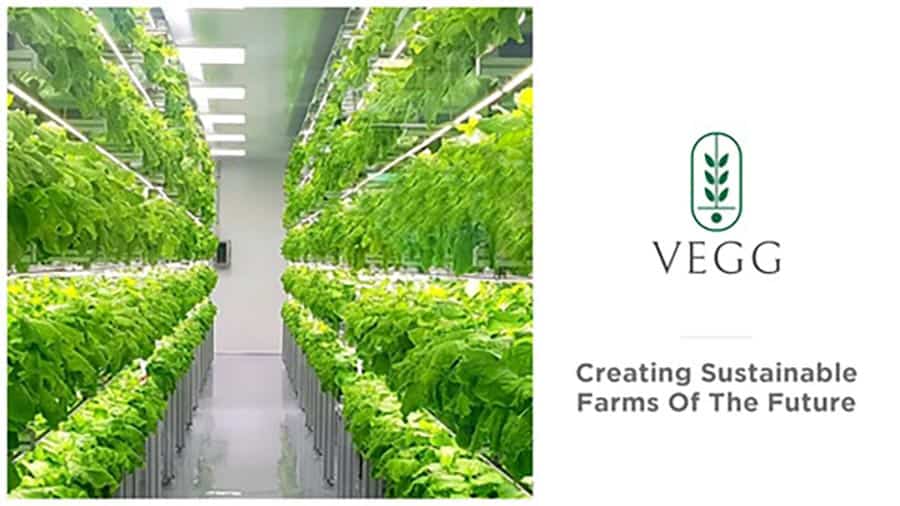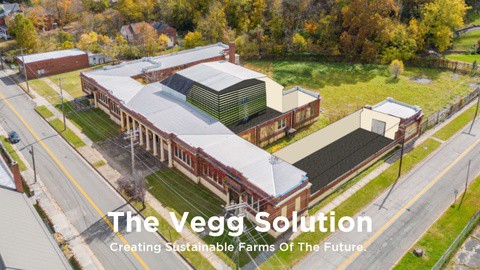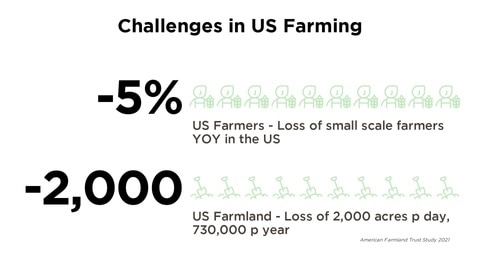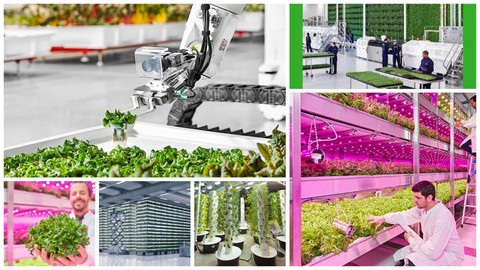Supervisors hear of plans for old Jefferson School building
 By MIKE WILLIAMS
By MIKE WILLIAMS
The Patriot
Developers have big plans for the former Jefferson Elementary School in Pulaski, and those plans involve – of all things – farming.
Vertical farming, that is, and they described the concept to the Pulaski County Board of Supervisors at their July meeting Monday night.
Cody Journell, President and CEO of VEGG – the name given the Jefferson project – and Luke Allison, Chief Development Officer presented the unique project to the board.
Journell said his group has been working on VEGG for almost a year.
The project centers around the old Jefferson school property, which Journell noted at one point was a staple in the community but has since become dilapidated.
“We’re hoping to bring it back to life with the project we’re working on,” he said.
 Through VEGG, Journell said the group hopes to take old abandoned historic structures such as old schools in rural towns throughout Virginia, and redevelop them into controlled environmental agriculture, or vertical farming, agriculture space.
Through VEGG, Journell said the group hopes to take old abandoned historic structures such as old schools in rural towns throughout Virginia, and redevelop them into controlled environmental agriculture, or vertical farming, agriculture space.
Journell, a Giles County native who owns a real estate brokerage and property management company in Blacksburg, is joined in the VEGG effort by Allison and several other advisors and stake holders including Steve Critchfield, a local developer and entrepreneur and Brad Copenhaver, the former Commissioner of Agriculture in Virginia among others.
Journell described what brought the group to Jefferson School.
“We had to take a step back for a second,” he said. “We started doing some research on farmland, and it’s no surprise that in the U.S. right now we are developing our farmland at a pretty alarming rate. We actually are losing 2,000 acres of farmland per day to redevelopment in our country. That’s leading to roughly a 5 percent decline in the number of farmers in the U.S.”
Journell said his grandfather had a family farm.
“And you know, he ran that for 30 to 40 years before he decided to retire. And unfortunately, no one in my generation was brought up, you know, tilling the soil or going to school to learn how to do that or anything along those lines. So, we had to sell the farm,” he said, adding that the loss of farms is leading to huge gaps in agriculture production.
“So, we have more population in our country at the moment, we’ve got less arable farmland that we can use to provide produce and food for our communities. And with all the government restrictions and things that are happening in our political climate, we’re actually being forced to do that in a more sustainable economic or eco-friendly way, which is a challenge,” he said.
 However, he said there has been a saving grace which is the technology that is being developed around the horticulture space, more specifically in the vertical farming space. Those include advancements in LED lighting, hydroponic systems and AI robotics.
However, he said there has been a saving grace which is the technology that is being developed around the horticulture space, more specifically in the vertical farming space. Those include advancements in LED lighting, hydroponic systems and AI robotics.
“We are actually able to take those farming methods that have been done outside and actually bring them inside and do them vertically,” Journell explained. “So, with these facilities we are able to grow sometimes six to 10 acres worth of produce in a one-acre footprint indoors. There’s no pesticides that need to be used and you can do it year-round. You don’t have to worry about droughts. It uses 97 percent less water and a lot of that is recycled throughout the process.”
Journell added the process is the way that big agriculture is trending.
He noted, however, that with advancements in technology, there are always the challenges that come with that.
“What we found is with the rising costs of real estate, which is no surprise to anyone here I’m sure, the acquisition costs for land for vertical farmers to find places for them to do these projects in these facilities is on the up and up. The development costs, the building costs, any materials, equipment, all of that is keeping a lot of farmers from being able to come in and really make a splash in this space unless they have a lot of venture capital backing, which is few and far between. That leads to tight operating margins for these vertical farmers. There’s high overhead costs when it comes to the debt and everything along those lines. The energy usage in a lot of these facilities is inefficient because they’re trying to build the facilities from the ground up with these warehouse type setups. It’s also burning a lot of fossil fuels. Most of them are heated by burning fossil fuels, natural gas, creating CO2 for the facility and supplementing the plant growth within the facility.”
In the old Jefferson School property, Journell said VEGG is creating a space for small to medium sized vertical farmers to be able to come in and actually lease vertical farming space as opposed to having to build something from the ground up or redevelop a building from scratch.
“We take these school buildings or old historic structures and use historic tax credits to redevelop them, and then offer them to small and medium sized vertical farmers to lease them out. That creates a lot of positives. They don’t have a lot of debt on their books and a lot of other things.
“The cherry on top of this is that we can do this in a completely carbon negative growing environment. So, it is a way to fill the gap in agriculture. It’s also a way that we can do it and be sustainable.
Allison went into how VEGG is going to accomplish the project.
“We’re talking about the building itself. So, to build a 30,000 square foot structure right now from the ground up, you’re talking $250 to $280 per square foot,” Allison said, adding the cost is about the same to do historic renovations.
“But when you can use historic tax credits 45 percent of the cost of rehabilitating it is covered with those historic tax credits. When you’re borrowing 55 percent of the cost, that’s what you need to cover with the lease.
“But instead of just using the tax credits we’re obviously using private investment. We’ve been running all over this state finding people to invest in this community, whether it’s Main Street or VEGG, or some other businesses like MOVA Technologies in Pulaski. When it comes to people and private investments, Pulaski has a lot of buzz right now. So, we really feel confident that through the historic tax credit mechanism in the private investment sector, we’re really going to be able to cut this (costs) down. So as a grower moves into the space, they don’t have to worry about these tight margins because really, the borrowed money – the traditional financing – we will be able to cover that quite easily.
“There’s so much money in the government right now in regard to climate smart technologies, regarding healthy food options for rural communities, and rural development we’re really targeting all of them. We don’t want any money left on the table in regard to this project,” Allison continued.
“The redevelopment of the structure from the beginning is already 50 percent less embodied carbon compared to traditional brand new construction. And then we’re going to use solar panels. The whole roof of of the Jefferson School will have solar panels. We’re going to use rainwater that can be recycled, so very little water will be used and we’re going to use captured CO2. That’s going to be harvested directly out of the atmosphere.
“There’s going to be a new story break for MOVA technologies and VEGG, Inc., where we got a $200,000 grant from the Department of Energy to harvest CO2 directly out of the atmosphere and sequester it in that growth facility. To create carbon negative produce, which has never existed. Pulaski is where we experience in the Jefferson School, a contributing historic structure, contributing structure for not only the community but the heritage of this community.”
County Administrator Jonathan Sweet said it makes a lot of sense for Pulaski County to be the home for the project.
“It makes logical good sense considering the Board of Supervisors’ triple bottom line approach to governance and the emphasis you put on solar photovoltaics. We’ve got the hydro renewables. We’ve got methane conversion at our landfill. We’re working on a next gen solar farm concept. You put all this together, Pulaski County has the potential to be one of the greenest communities, of course in the Commonwealth, and perhaps in the country from a per capita standpoint. We’re home to a variety of international companies who have a focus on reducing carbon footprint, whether it’s Volvo who has the largest market share of commercial electric vehicles, or Trova who is putting forth a product in the marketplace for yard trucks, in an electric space. And so we really have this electric mobility market tied up here. You add MOVA technologies and what they’re doing with carbon capture … the moral of the story is you put all this together and it makes sense for us to be looking at really these next level, green investments, climate smart, green tech investments and it fits into some of the pursuits we’re making collectively with the private sector for major federal funding sources,” Sweet said.

